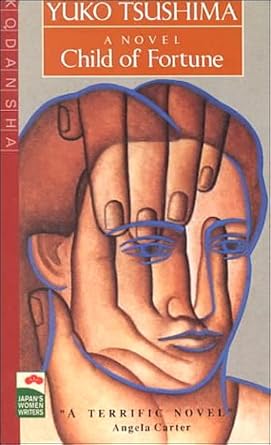
A novel I've wanted to read for quite a while but somehow hadn't got around to reading, Sayonara,Gangsters/ Sayounara Gyangu-tachi was published in Japan in 1982, translated by Michael Emmerich and published in English by Vertical Inc. The narrative of the book sometimes reminding me of Vonnegut and sometimes of Flann O'Brien's 1939 novel At Swim Two Birds, it blends surrealism, meta fiction, metaphor into a fantastic mix, the novel offers up many amusing scenes, and many unexpected twists and turns, including the poet Virgil as a refrigerator, an object called 'Some Incomprehensible Thing', (whose actions are incomprehensible to itself), a suicidal Ferris wheel, a security guard who doesn't know if he's working in a hospital or a hotel, to name but a few. The main protagonist is a teacher of poetry, the opening scenario is that of an assassination..by bubblegum, and then were introduced to a world set in what could be the future, a time though when you could change your name at the local city hall, everyone seemed to be doing it, although to change your name unofficially could have deadly consequences, a classmate of the narrator names himself, and the name kills him.Were also told about 'the gangsters' a notorious criminal gang. The poetry teacher meets a woman who he names The Nakajimi Miyuki Songbook, she has a cat called Henry IV, she hands him a piece on which she has written, Sayonara, Gangsters and explains that she used ,'to be a gangster but not anymore,so Sayonara,Gangsters is my name'. He recalls the time he met the gangsters, (in a bank raid), and takes us back to the time before he met Song Book, he had worked at a production line in a factory. He lived with a woman at this time and they had a daughter, who he calls Caraway but her mother calls Green Pinky.
He describes the Poetry School he teaches at, which used to have tens of thousands of students, when asked to describe his job he explains 'I do almost nothing here. Pressed to explain, I might say that my job is conducting traffic'. A visit from a Jovian (someone from Jupiter), who points out differences between concepts of death and time, pointing out that on Jupiter 'we have a time whose quantity is not fixed'. Takahashi's prose has a rolling snowball quality to it, often something alluded to in one chapter or paragraph will feature prominently in the following one,which throws together seemingly unrelated scenarios and objects to great effect, usually ending in philosophical reflection, and sometimes just abruptly coming to an end, which gives the narrative alot of buoyancy. The gangsters make an appearance again nearer the end of the novel when four of them turn up and demand a poetry lesson, one of them begs Songbook to return to the fold, they're poetry lesson seems to give way to being an inquiry into the ethics of 'gangsterism', but the encounter ends up being a decisive shoot out with the police.Comparisons with Murakami Haruki are inevitable, maybe Takahashi's has his foot pressed a little harder on the acceleration pedal. But like many reviews I've read of this novel, to try and sum it up would be inadequate to describe this intriguing reading experience.




